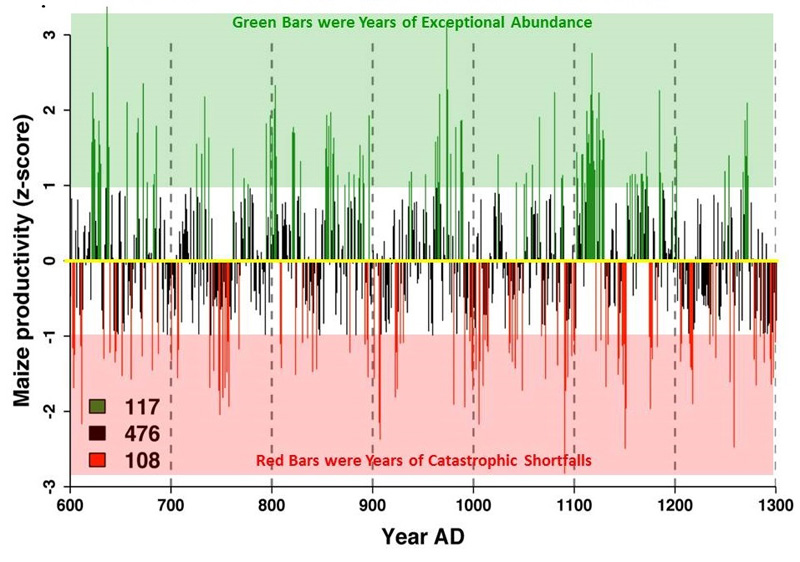North Study Area Paleoproductivity from A.D. 600 to 1300
VEP scientists used tree-ring analysis to estimate precipitation and temperature and how it changed each year in the VEP study areas. They combined this with other ecological factors, including the distribution of the different types of soils in the study areas. Using these data, they were able to estimate the amount of maize that could have been grown in the study areas and how maize yields varied each year as a result of changing climate. This graph shows these results for the VEP north study area.

The horizontal yellow line in this image is the average yield for the entire study area for the 700 years between A.D. 600 and 1300.
Each vertical bar is an individual year. The black bars are years that were less than one standard deviation above or below this long-term average, or years when the departure from the average yield was not too extreme.
The green bars are years when exceptional moisture and favorable temperature produced yields that were more than one standard deviation above the long-term average. These years of exceptional abundance would have allowed Pueblo farmers to store surpluses that could be used during years when yields were low, and these stored yields could have been exchanged with others during lean years.
The red bars are years when drought and unfavorable temperatures resulted in yields that were more than one standard deviation below the long-term average. These years of low agricultural yields would have threatened the food security of Pueblo families. Storage and exchange were two means by which Pueblo people coped with this periodic scarcity.
Graph by R. Kyle Bocinsky and Crow Canyon Archaeological Center. |













